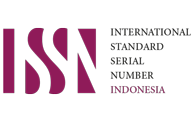Perencanaan Desain Ruang Henti Khusus (RHK) Dan Yellow Box Junction (YBJ) Pada Persimpangan Jalan Kapasan
Abstract
In Surabaya, one of the busiest junctions is a signalized junction connecting Kapasan - Kenjeran Street and Kapasari - Simokerto Street. This study's analysis followed the technical requirements for signalized junctions according to the Indonesian Road Capacity Manual 1997 and used modeling with Vissim software. The result showed that the writer could find the queue length and delay for the north, west, and east arms. In that arm, the vissim result was more significant than Indonesian Road Capacity Manual. On the south peninsula, the queue length and delay value for Indonesian Road Capacity Manual were more outstanding than for vissim. The result of the Special Break Room design for the east approach had an area of 91.2 m2 with details of 2 lanes with a width of 2 x 3.8 meters, and the main length of the Special Break Room section was 12 meters with a capacity for 61 motorbikes. Vissim analysis result after the researcher implemented Special Break Room markings was the queue length was reduced from 329 meters to 83 meters, and the delay, which was previously 190 seconds, became 41.78 seconds. The planning result of Yellow Box Junction markings obtained a vertical line from north to south with a length of 22 meters and a horizontal line from west to east was 18 meters. The width of the straight and diagonal lines was between 10 – 18 cm, and the thickness was between 2-30 mm above road level.
Keywords
Full Text:
PDFRefbacks
- There are currently no refbacks.







